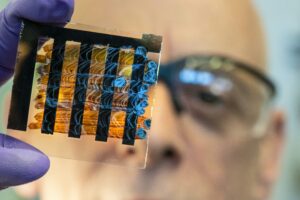“You treat us like a pack of galahs,” a memorable line from the 2000 Australian film The Dish, captures the uniquely Aussie humor that has endeared the movie to audiences worldwide. Directed by Rob Sitch and produced by the Working Dog Productions team, The Dish stars Sam Neill, Tom Long, and Kev Harrington as the dedicated staff at the Parkes Observatory in rural New South Wales. The film dramatizes the role of the observatory, affectionately known as ‘The Dish,’ in relaying live TV images of the Apollo 11 Moon landing.
While the film is celebrated for its charm and wit, it also raises questions about its historical accuracy. As audiences continue to enjoy this classic, it’s worth exploring what aspects of the film are grounded in reality and which are embellished for storytelling purposes.
Fact: The Real Role of Parkes Observatory
The Parkes Observatory indeed played a crucial role in the Apollo 11 mission. Known for its significant contributions to space exploration, the observatory supported NASA by tracking Apollo 11, capturing voice signals from astronauts, and receiving the television signals of the iconic moonwalk. This collaboration was vital, especially when signals from NASA’s Goldstone tracking station in the USA temporarily failed.
The film accurately portrays the Parkes control room and the operations of the telescope, highlighting the observatory’s importance in the mission. As one character in the film states,
“We’re in the middle of the greatest feat ever attempted. This is science’s chance to be daring.”
Weather Challenges and the Decision to Persevere
Another factual element of the film is the depiction of the harsh weather conditions faced by the Parkes team. On the day of the moonwalk, winds gusted up to 100 km/h, posing a significant challenge to the operation of the radio telescope. Despite the risks, the then-Director John G. Bolton made the bold decision to continue tracking the spacecraft, a choice that proved successful.
Former Parkes electrical engineer David Cooke recalls the stormy conditions, emphasizing the team’s dedication and resilience in the face of adversity.
Fiction: Creative Liberties for Dramatic Effect
While The Dish captures the essence of the Parkes Observatory’s contributions, it takes creative liberties in its portrayal of events and characters. One of the film’s major departures from reality is the suggestion that Parkes was solely responsible for the broadcast of the moon landing. In truth, NASA’s Honeysuckle Creek tracking station near Canberra played a pivotal role, receiving the first minutes of the televised broadcast, including Neil Armstrong’s famous “One giant leap” moment.
Moreover, the film’s depiction of the observatory staff playing cricket on the telescope and experiencing a power failure are fictionalized for comedic and dramatic effect. In reality, the Parkes team maintained rigorous quality control, and no such power failure occurred during the mission.
Character and Setting Embellishments
The film also introduces fictional characters and scenarios to enhance the narrative. The personas of the observatory staff are fictionalized, with the real Director John Bolton having passed away in 1993. Additionally, the film’s portrayal of American and Australian interactions is dramatized; in reality, the collaboration was marked by mutual respect and cooperation.
Furthermore, the film’s opening scene, depicting the Prime Minister’s ignorance of the Parkes Observatory, is a fabrication. The Australian Government was well aware of the telescope’s significance, having funded half of its construction costs.
Legacy and Continued Collaboration
Despite its fictional elements, The Dish remains a beloved film that celebrates a pivotal moment in history. It highlights the spirit of innovation and international cooperation that characterized the Apollo 11 mission. Nearly 50 years later, the Parkes Observatory continues to work with NASA, contributing to ongoing space exploration efforts.
For those interested in learning more about the real story behind The Dish, the Parkes Observatory Visitors Centre offers insights and educational resources, including the book Parkes: 30 Years of Radio Astronomy.
As audiences revisit this cinematic gem, it’s essential to appreciate both the film’s artistic liberties and the remarkable achievements of the real-life scientists and engineers who helped make the moon landing a reality.







